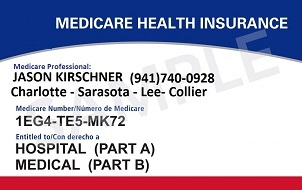Part D is the prescription drug coverage component of Medicare. The premium costs for Part D coverage can vary depending on a number of factors, including the specific Part D plan chosen, the beneficiary's income, and whether or not the beneficiary receives extra help with prescription drug costs.
The average monthly premium for a Part D plan in 2021 was about $33, but premiums can range from less than $10 to more than $100 per month. Some plans have no deductible, while others have deductibles of several hundred dollars. In addition to monthly premiums, there may be other costs associated with Part D coverage, such as copayments or coinsurance for prescription drugs.
It's important to note that beneficiaries with higher incomes may be subject to an income-related monthly adjustment amount (IRMAA), which increases their Part D premium costs. The IRMAA is calculated based on the beneficiary's modified adjusted gross income (MAGI) from two years prior.
If a beneficiary qualifies for assistance programs such as for extra help with prescription drug costs, their Part D premium costs may be lower, and they may have lower copayments and deductibles as well. Extra help is available to people with limited income and resources.
Stages of drug costs to be aware of:
- Deductible Stage: During this stage, you'll pay the full cost of your medications until you reach your plan's deductible. Not all Part D plans have a deductible, but if your plan does, you'll need to pay the full cost of your medications until you've met it.
- Initial Coverage Stage: Once you've met your deductible, you'll enter the initial coverage stage. During this stage, you'll pay a co-pay or coinsurance for each medication you receive, and your plan will cover the rest of the cost.
- Coverage Gap (Donut Hole) Stage: If your total drug costs (what you and your plan have paid) reach a certain amount, you'll enter the coverage gap stage. During this stage, you'll pay a percentage of the cost of your medications (usually 25%) until your out-of-pocket costs reach a certain limit.
- Catastrophic Coverage Stage: After you've spent a certain amount out-of-pocket, you'll enter the catastrophic coverage stage. During this stage, you'll pay a small co-pay or coinsurance for each medication you receive, and your plan will cover the rest of the cost.
It's important to note that not all Part D plans have the same stages or costs, so it's important to review your specific plan's details to understand how your drug costs will be covered.

